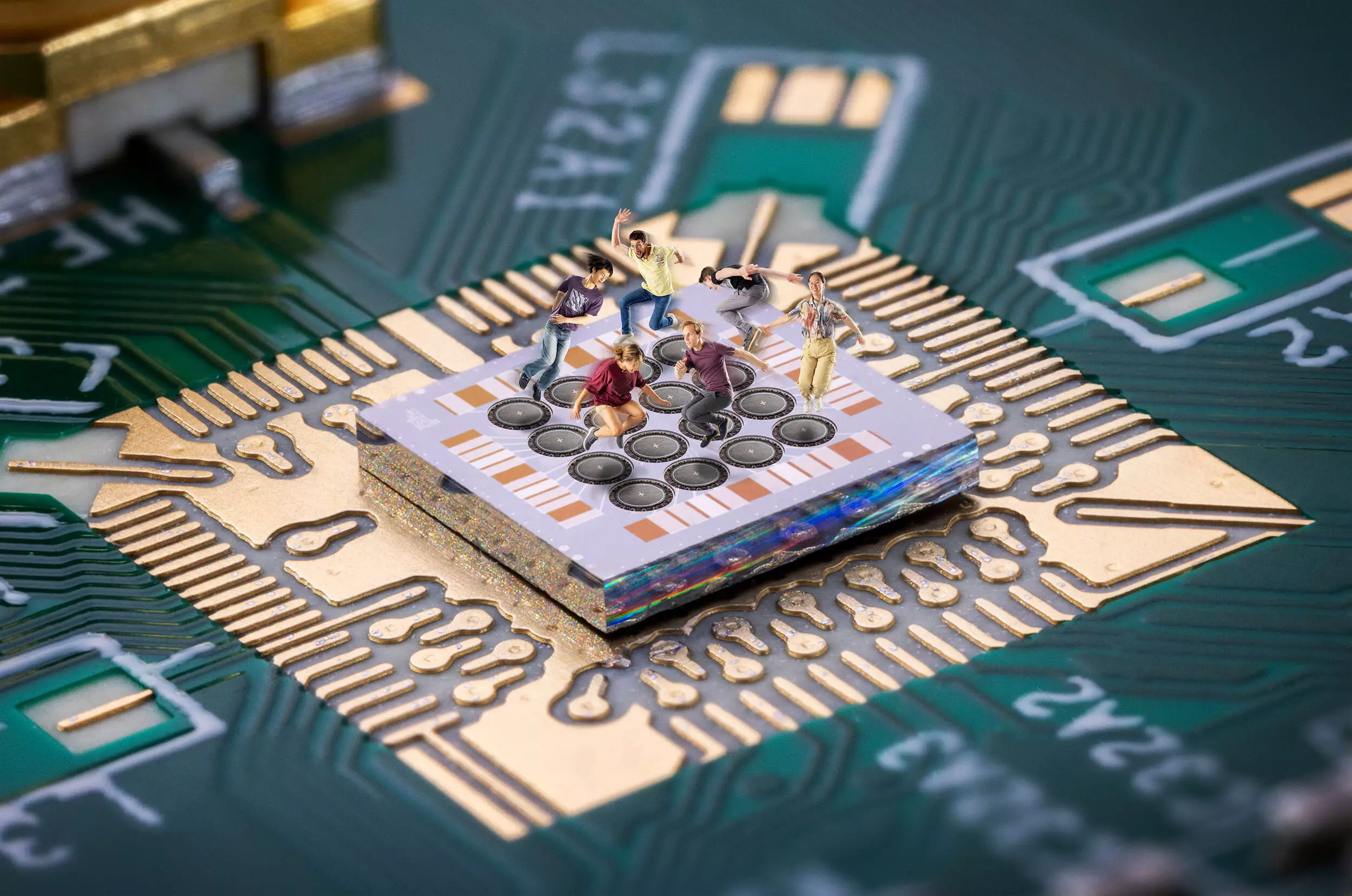In the dynamic world of quantum computing, where the quest for advancements is relentless, the researchers at QuTech have made a groundbreaking discovery that could redefine the landscape of qubit control techniques. Their innovative work on somersaulting spin qubits heralds a new era for universal quantum logic and reflects the culmination of over two decades of theoretical groundwork. In an age dominated by the fear of slower technological progress, QuTech has emerged as a beacon of hope, unveiling their findings in premier journals like Nature Communications and Science, signifying the gravity of their achievements.
The foundational theory behind hopping spins, first introduced in 1998 by Loss and DiVincenzo in their seminal paper “Quantum Computation with Quantum Dots,” proposed spin hopping as an essential mechanism for qubit logic. Yet, for years, experimental validation had eluded the scientific community. Fast-forward to the modern day: QuTech’s research signifies that the ambitions of the past are now materializing, piggybacking off cutting-edge experiments that demonstrate the practical feasibility of ‘hopping gates.’
Germanium: The Unsung Hero of Quantum Architecture
What sets QuTech’s findings apart is their employment of germanium as a promising platform for realizing these quantum connections. Historically, researchers faced challenges when it came to implementing the specific magnetic requirements suggested in the original theories. However, the QuTech team has turned to germanium, a semiconductor that shows inherent capabilities for facilitating spin rotations on its own, thus sidestepping lengthy complexities. This strategy not only boosts performance but also aligns seamlessly with their goal of creating universally accessible qubit controls.
The qubits identified in this research have significant advantages over other platforms by allowing simpler control of spin dynamics without the reliance on microwave signals that have dominated the standard approach. By leveraging baseband signals and minimizing dependence on external magnetic fields, researchers have potentially streamlined the intricate control electronics necessary for operating future quantum processors. In a field that often grapples with elaborate setups and extensive circuitry, this simplification could catalyze practical applications more swiftly.
Decoding Somersaulting Qubits: A Playful Analogy
To appreciate the nuance of hopping versus somersaulting spins, it’s easy to visualize it through the lens of a trampoline park, where the electron spins resemble individuals jumping between trampolines. Traditionally, a person might utilize their designated trampoline. However, with the unique mechanics of germanium, these ‘jumpers’ can now somersault and traverse multiple trampolines—akin to hops between quantum dots interlinked in a network. This analog serves to illuminate the sophisticated dynamics operating within qubit control pathways.
Chien-An Wang, the lead author on the Science paper, emphasizes germanium’s unique ability to align spins accordingly across different quantum dots, allowing the team to realize effective qubit performance by enabling spins to leap from one quantum dot to another consistently. Error rates in their tests have shown remarkable potential, demonstrating less than a thousand for one-qubit gates and even less than a hundred for two-qubit gates—an impressive feat in the realm of quantum computation that suggests high-resolution qubit manipulation.
Beyond the Horizon: Quantum Networks of the Future
Venturing further than merely establishing control over single and adjacent spins, the research delves into multiple qubit networks, fostering control routines that allow for hopping among an array of up to ten quantum dots. This exploration represents a significant leap towards understanding larger and more complex qubit systems, which are crucial for scalable quantum computing. Co-authors Valent John and Francesco Borsoi articulate the importance of characterizing the variances across different quantum dots to further refine how qubits interact and evolve in tandem with each other.
Each quantum dot, much like the different trampolines, imparts its distinct torque during spin hopping, a phenomenon that must be understood to master qubit connectivity. The QuTech group’s innovative routines not only catalyze experimentation in more intricate array configurations but also provide insights into essential metrics that will underpin advanced quantum algorithms.
QuTech’s remarkable achievements aren’t simply another step forward; they are emblematic of what collaborative research can yield through unwavering dedication and ingenuity. Principal investigator Menno Veldhorst’s pride in team efforts is underscored by the transformative power of a year-long project that evolved rapidly from theoretical vision to experimental triumph. His statement reflects a broader narrative in quantum research: that groundbreaking advancements can result from collective endeavors aimed at embracing the unknown. Through the lens of somersaulting spin qubits, the promise of quantum computing appears more tangible than ever—a future rich with potential and unprecedented opportunities.

